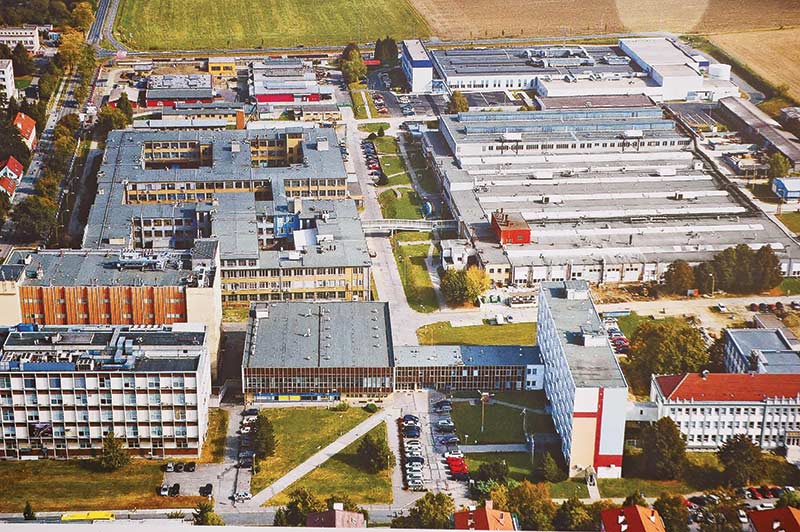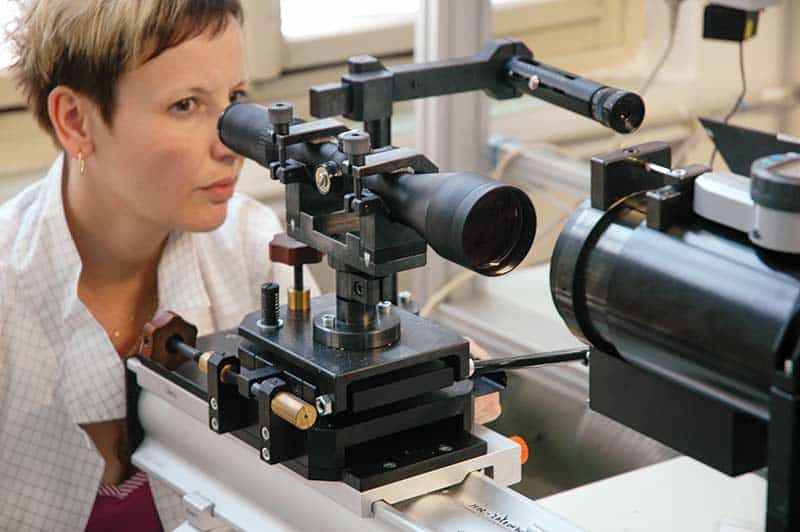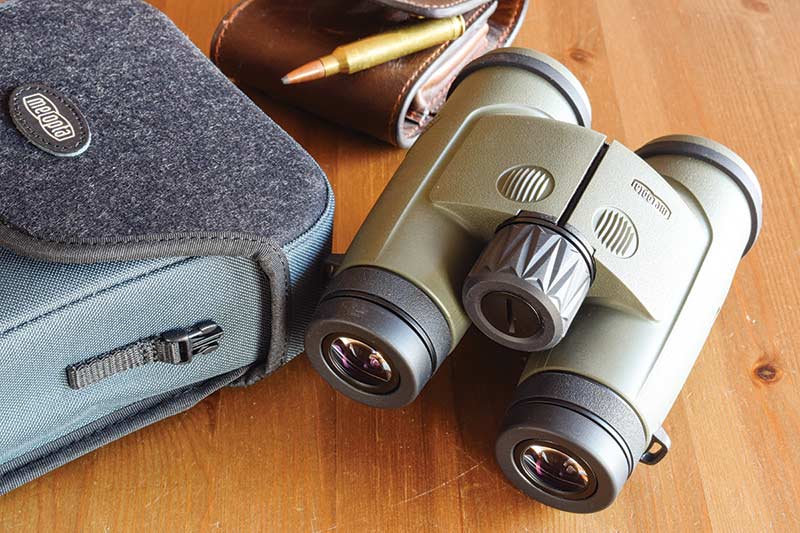Meopta Optics
Glass from the other Europe
Like Swiss watches and Italian sports cars, Teutonic optics have a hallowed history. Hensoldt and Zeiss, then Leica in Wetzlar — and Schmidt & Bender in Biebertal — have made Germany a celebrated hub for makers of optical instruments. Add Austria, given Swarovski’s Absam home in the Tyrolean Alps.
You could say high-end Japanese and Philippine manufacturers match the quality of rifle scopes and binoculars from the Old Country. The science, processes and materials yielding superior optics are shared worldwide. European makers buy glass from Japan.
Europe’s top optics names come by their celebrity honestly, but not all glass worth knowing is well known. I’d visited Europe several times before finding a factory in the Czech Republic big enough to dwarf a Walmart distribution hub, one that has spent more than $10 million on lens-coating machines, employs 2,500 people and has built scopes since the depths of the Depression — Meopta.
Checking In
Prerov is an industrial city, founded in the 18th century and now part of the Czech Republic. Of its 45,000 residents, 2,500 work at Meopta whose factory commands an expansive campus on Prerov’s hem.
Despite a growing product line for hunters, only a quarter of Meopta’s business has to do with sporting optics. Binoculars generate less than 20 percent of this revenue while over half comes from sales of rifle scopes. Military contracts make up just under 10 percent of total sales — though I can’t say if the prisms for Abrams tanks and windshields for Boeing and Northrup-Grumman aircraft are so listed, or ranked as “industrial” products, which comprise half of Meopta’s output.
Founded by a Dr. Mazurek, the company manufactured optics under a Communist regime from 1933 to 1990. It became Meopta in 1946. According to Surujh Roopnarine, who hosted me at the factory, “until about 1970 it made a range of optical and mechanical items, including the only cinema projector in Europe. During the ’70s and ’80s it focused on military glass, binoculars to periscopes.” In 1991 Meopta was bought by an American, Paul Rausnitz. His family still owns it. A U.S. branch appeared in 2004.
Surujh is also American. A native New Yorker, he met his Czech wife when she visited there to train in Meopta’s U.S. office. They moved to Prerov, he as one of two Meopta sales executives. English is not widely spoken in the C.R., and as Czech was not offered in my high school, Surujh proved useful. He was also articulate and most gracious.
After an hour’s walk on ancient stone paths through Prerov’s “old town” along the Becva River, I got a few details on Meopta sales stateside. Not all carry the company’s name. “We’ve made components for other European manufacturers,” Surujh assured me, “and Cabela’s sold our binoculars under its own label.” While Meopta exports to 55 countries, Germany and the U.S. are its top customers, accounting for 20 and 23 percent of product shipped. The Czech Republic, with relatively few hunters, is a distant third.
Meopta values the traditional and serves the European market with big scopes excelling for wild boar hunting at night. My old Meopta Artemis, one of three fixed-power scopes then cataloged, has a steel tube. Still, the company keeps an eye on shifting trends. Alloy now accounts for well over 80 percent of metal in the firm’s optics. “All reticles, first-plane and second, are etched,” Surujh said as he led me through stadium-size buildings. “The lens is coated with chromium oxide, then photo-sensitized. UV light beamed through the template exposes all but the reticle. When the chromium oxide is washed off, just the reticle remains.”
The section for lens production, coating and fitting is enormous. “It employs 900 people,” Surujh said. “There are 40 coating machines, including eight Syrus units that cost 1.2 million Euros apiece! Our MeoBright lenses get 13 coatings. We apply up to 100 on others, some aspherical.” Heat-sensitive fluorite glass doesn’t like coatings at 300 degrees C, “so for it we dial temperatures back to 80 C.”
About 500 employees staff the mechanical division, which includes anodizing. “Some companies farm that operation out,” explained Surujh. “Almost all the work on Meopta products happens right here.” Meopta doesn’t make plastic or rubber parts. It outsources only “universal” hardware: small screws, pins and washers.
Some Meopta products for the U.S. are shipped as components, a common ploy to avoid onerous tariffs on finished goods. Parts are assembled in Meopta USA facilities on Long Island.
Optically, the binoculars, rifle scopes and spotting scopes from this Czech maker seem to me the equal of German and Austrian products in the same or higher price strata. By other measures too, Meopta delivers fine value. My MeoPro 3-9×40 has a lightweight, 1″ alloy tube, sharp quarter-minute clicks, plenty of ring space and a rear-plane reticle. It was modestly priced. “Czech wages trail those in Austria and Germany,” Surujh said. “We’re catching up but still enjoy a 20% savings in labor costs.”
Lineup
Meopta’s rifle-scope stable has grown considerably over the last decade. The MeoPro on my .25-06 is no longer listed but the Optika5 series with five-times magnification ranges (2-10x, 3-15x and 4-20x) has upstaged its parent line. The Optika5’s still have 1″ tubes while other Meopta scopes — MeoPro Optika6, MeoStar R1 and MeoStar R2 in ascending order of price — feature 30mm tubes.
MeoStar 1, with four-times magnification, offers illuminated reticles. Meopta’s top-end MeoStar R2 has six-times magnification in four versions. The rear-plane reticle (K-Dot2 illuminated or German #4) appears one size across the power range. Field of view at 1x: a huge 113 feet at 100 yards! Eight brightness settings adjust for any light condition while MeoDrop hydrophobic lens coating sheds water.
One of the best new products from this Czech firm is the MeoSight III, a 1½-oz. open red dot sight useful for hunting handguns and slug-slinging shotguns as well as for rifles. It’s parallax free, with your choice of 3- or 5-minute dot, automatic or manual brightness control.
Meopta’s binoculars come not only in common 8×42 and 10×42 configurations, but in 7×42 and nimble 8×32 versions. The 12×50 and 15×56 let you see far comfortably when you must keep eyes to the glass for long periods. In blind tests Meopta’s MeoStar spotting scopes I’ve used would be impossible to distinguish from the industry’s most expensive models.
Europe’s top optics names have come by their celebrity honestly, but not all glass worth knowing is well known. I’d visited Europe often before finding in the Czech Republic a factory to dwarf a Walmart distribution hub, that’s spent more than $10 million on lens-coating machines, employs 2,500 people and has built scopes since the depths of the Depression.
Meopta is one of a few brands proving you needn’t always pay the most to get the best.








